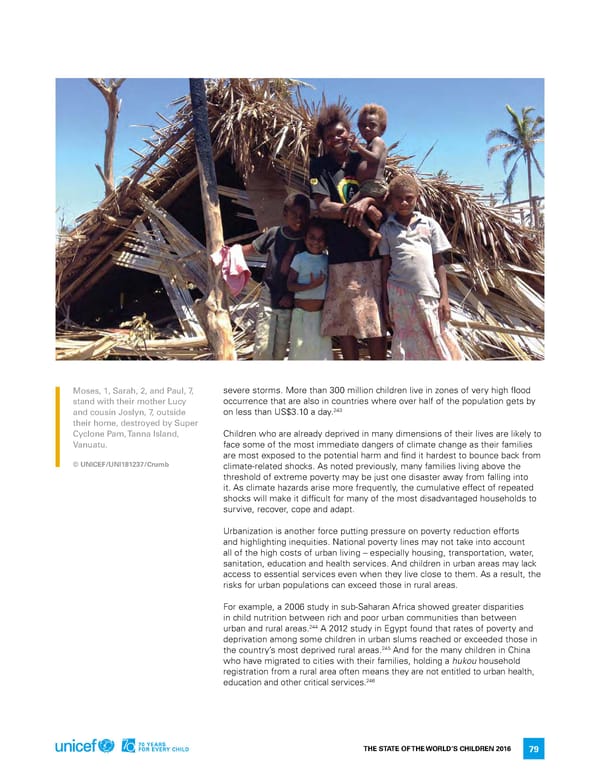Moses, 1, Sarah, 2, and Paul, 7, severe storms. More than 300 million children live in zones of very high flood stand with their mother Lucy occurrence that are also in countries where over half of the population gets by on less than US$3.10 a day.243 and cousin Joslyn, 7, outside their home, destroyed by Super Cyclone Pam, Tanna Island, Children who are already deprived in many dimensions of their lives are likely to Vanuatu. face some of the most immediate dangers of climate change as their families are most exposed to the potential harm and find it hardest to bounce back from © UNICEF/UNI181237/Crumb climate-related shocks. as noted previously, many families living above the threshold of extreme poverty may be just one disaster away from falling into it. as climate hazards arise more frequently, the cumulative effect of repeated shocks will make it difficult for many of the most disadvantaged households to survive, recover, cope and adapt. Urbanization is another force putting pressure on poverty reduction efforts and highlighting inequities. national poverty lines may not take into account all of the high costs of urban living – especially housing, transportation, water, sanitation, education and health services. and children in urban areas may lack access to essential services even when they live close to them. as a result, the risks for urban populations can exceed those in rural areas. for example, a 2006 study in sub-Saharan africa showed greater disparities in child nutrition between rich and poor urban communities than between 244 urban and rural areas. a 2012 study in egypt found that rates of poverty and deprivation among some children in urban slums reached or exceeded those in the country’s most deprived rural areas.245 and for the many children in China who have migrated to cities with their families, holding a hukou household registration from a rural area often means they are not entitled to urban health, 246 education and other critical services. The STaTe of The World’S Children 2016 79
 70 Years for Every Child Page 95 Page 97
70 Years for Every Child Page 95 Page 97